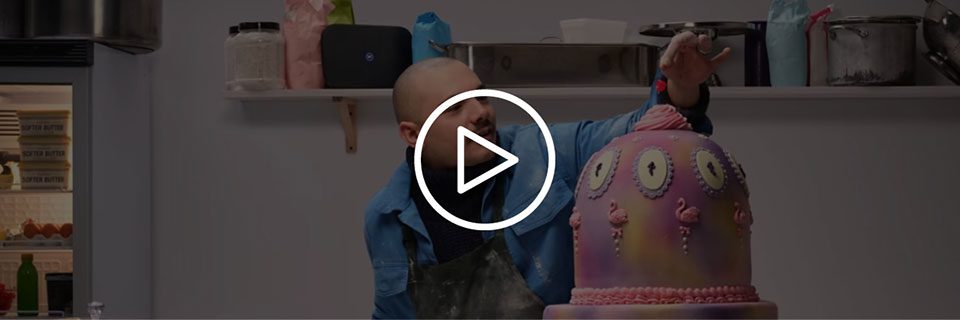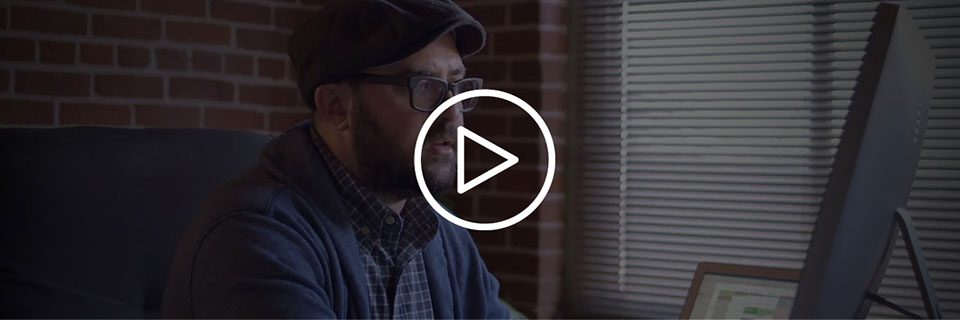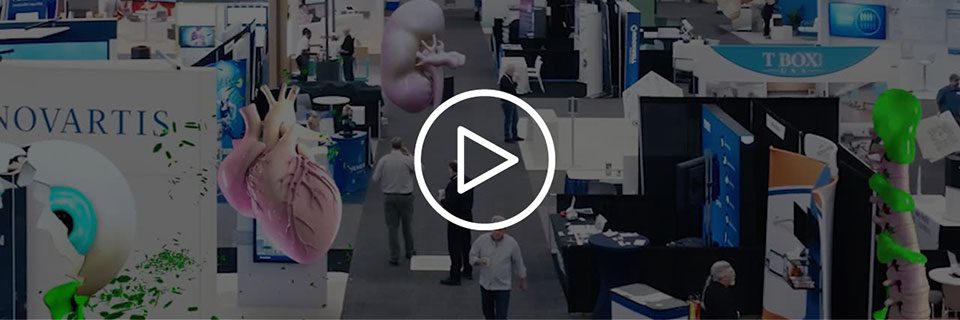The bar for creativity in B2B marketing has been raised higher than ever before – long gone is the misconception that it doesn’t need to be creative. Once considered a supporting role to sales, B2B marketing has undergone a remarkable transformation in recent years. Fuelled by bold and innovative creative campaigns, it has stepped into the spotlight, asserting its significance in driving business growth.
Leading brands are now witnessing the tangible impact that creativity offers, with studies indicating that a powerful creative idea can be 10 to 20 times more effective than mediocre creative. This realisation has sparked a recent surge in brands actively seeking partnerships with creative agencies to amplify the effectiveness of their campaigns.
As traditional B2B sales and marketing strategies mature, it’s increasingly clear that the future of B2B demands a more creative approach with more of a B2C mindset. By embracing creativity, adopting successful strategies, and drawing insights from the B2C world, B2B businesses can unlock new growth opportunities and gain a competitive edge in the age of content overload.
Emotionally driven decisions
Much like B2C, the most compelling B2B content resonates with us not just intellectually, but emotionally as well. It’s about striking the right chord — stirring emotions while simultaneously imparting knowledge and inspiring action.
The path to achieving this level of resonance for B2B brands lies in embracing creativity. The focus must shift towards crafting captivating narratives, evoking genuine emotions, and building authentic connections with consumers.
Consider the 95-5 rule. It suggests that only 5% of potential buyers are actively in-market at any given time, leaving the remaining 95% still in the preliminary stages of their purchasing journey. Creative marketing embeds the brand in the memory of future buyers, ensuring that your business remains at the forefront of their minds when they eventually come in market.
In this article, we’ve picked 5 outstanding examples of creativity in B2B marketing that do just this. We explore what makes them so impactful and extract key insights that B2B marketers can leverage to infuse creativity into their own campaigns.
5 outstanding examples of creativity in B2B marketing
Tech and telco brands often find themselves entangled in a web of complex terminology and concepts. However, BT’s campaign, “Whatever Your Business, BT’s Got Your Back”, stands out as a brilliant example of simplicity and effectiveness.
This campaign deftly tackles the challenge of appealing to a broad target audience, confidently encompassing “any business”. Rather than being stifled by their vast target market, BT transforms it into an advantage. Their TV ad, in particular, not only showcases a diverse array of customers but also injects depth and intrigue into the narrative, contemporising the brand’s image.
At the campaign’s core lies a strategic approach aimed at cutting through the noise and establishing genuine connections with customers. By distilling their message into a single, powerful promise that resonates with all business customers, BT have crafted a cohesive narrative that has then been seamlessly interwoven throughout the fully integrated campaign.
Additionally, BT are cleverly trading on their established status as a trusted brand. This serves as a strong foundation upon which the campaign builds its compelling narrative, and straightforward messaging.
This product demo for Slack takes a bold departure from the conventional approach to case studies and product demos. Rather than creating a dull and boring consideration piece, they’ve created a hero piece of content that sits proudly at the top of the marketing funnel.
As audiences crave more authentic and human connections with brands, this campaign recognises the power of infusing human emotions into what is typically perceived as dry, technical content.
With its well-scripted narrative and comedic performances, this campaign brilliantly showcases how humour can serve as a powerful differentiator for B2B brands. It not only entertains, but demonstrates how much mileage you can get from content repurposing, simply by posing questions such as: What can we do differently here? How can we create content that not only captivates our audience but also compels them to watch till the end and share it with others?
During a TV show, Mailchimp faced a potentially embarrassing moment when their brand was mispronounced. But rather than shying away from the mistake, Mailchimp embraced it wholeheartedly, transforming what could have been a setback into a remarkable opportunity.
They devised a creative solution: they set up nine examples of how the brand could be mispronounced and launched a multi-channel campaign to target these misspellings. The campaign, titled “Did you Mean Mailchimp?” featured dedicated landing pages for each misspelling, accompanied by engaging and quirky videos.
This approach draws inspiration from the highly successful and long-running Compare the Meerkat campaign, demonstrating how addressing and even celebrating perceived flaws can lead to a powerful brand activation. By boldly confronting the mispronunciation of their brand and going above and beyond to reclaim the conversation, Mailchimp effectively turned what could have been a negative situation into a positive brand moment.
HP has expertly demonstrated the art of delivering a simple message with a creative twist in their short film, “The Wolf”. Using a very cinematic and dramatic production, the threat is made real, tangible, and immediate.
Taking inspiration from the world of B2C marketing, HP’s campaign features a high-profile celebrity, Christian Slater, in the role of The Wolf. Slater serves as the malevolent narrator guiding viewers through the sinister exploits of this enigmatic figure, manipulating flaws in human decision-making and security processes to spread malware.
What distinguishes this campaign is its ability to subtly outline the need for the solution without resorting to overtly selling HP’s features and benefits. Instead, it cleverly highlights the necessity of the solution while engaging audiences with a compelling narrative and both long and short form formats.
At the NKF conference (National Kidney Conference), Horizon wanted a way to elevate awareness and highlight the significance of gout, a condition often overlooked by healthcare professionals. Faced with the challenge of standing out among other high-budget display stands, they needed a creative solution to effectively convey their message.
Their solution? The “Systemic Booth” – an interactive exhibit that challenges more traditional conference experiences. As visitors approached the booth, they were greeted by a cube decorated with a simple QR code. On activation, an augmented reality (AR) experience unfolded, wherein dynamic animations ‘spread’ across the conference venue. Every surface, including competitors’ booths, became a canvas for Horizon’s important messaging.
Adding an element of gamification to the experience, attendees were encouraged to ‘collect’ every body part featured in the AR animations. While humour played a role in the entertaining animations, the AR experience remained highly informative.
This ingenious approach allowed Horizon to amplify their message on a relatively modest budget compared to other exhibitors. By blending creativity, technology, and strategic messaging, they succeeded in captivating audiences and left a lasting impression at the conference.
Crafting creative solutions
B2B marketing is navigating an increasingly saturated and competitive environment, where brands contend for the attention of an audience bombarded with messages from countless competitors. As competition intensifies, creativity becomes ever more important for B2B marketing. This, coupled with embracing some of the principles from B2C marketing is essential to differentiate and establish a unique identity in the marketplace.
The examples we’ve shared in this article illustrate that creativity need not be elaborate or complex to break through the noise. Instead, simplicity is key. By avoiding overly complex terminology and concepts, brands can deliver clear, concise, and compelling messaging, addressing their audience’s immediate needs and sparking interest.
Likewise, these examples highlight the importance of evoking an emotional response from audiences. Prioritising storytelling, authenticity, and emotional engagement enables brands to build meaningful connections with their audience. And while the subject matter may be serious, there’s ample room for humour in B2B marketing, injecting life and personality into campaigns.
Additionally, with a creative idea, it becomes far easier to integrate campaigns and elevate your broader marketing and communications activities to further amplify your message. Traditionally, B2B tech companies have been stuck in the PR rut of only talking about product launches and updates to features, or utilising reports to create angles and stories. However, by embracing a creative idea, brands can develop integrated, omni-channel campaigns and experiences that command attention, cut through the noise and engage new audiences.
At onebite, we recognise that to thrive and survive, businesses must adapt to shifting customer behaviours and preferences. As B2B marketing evolves in the age of content overload, it’s becoming increasingly clear that the future of B2B demands a more creative approach. Get in touch today to arrange a chat with one of our marketing specialists to discuss how we can help you create attention-grabbing campaigns that drive demand and fuel long-term revenue growth.

Marcela Bohórquez, Senior Developer
Marcela, Senior Developer at onebite with over 25 years of experience in the digital media world. She holds a Bachelor of Science in Systems and Computing Engineering from the University of the Andes and a Master of Arts in Digital Media from London Metropolitan University.
Throughout her career, Marcela has developed a wide range of projects, including websites, web applications, interactive experiences, video and animation. She specialises in the intersection of creativity and technology and she is equally passionate about tackling technical challenges and creative ones, always striving to communicate and engage effectively through the strategic use of digital tools and platforms. She also shares her experiences, knowledge and research through collaborating in the onebite’s maketing blog. She is interested in how technology evolves and shapes our world.









